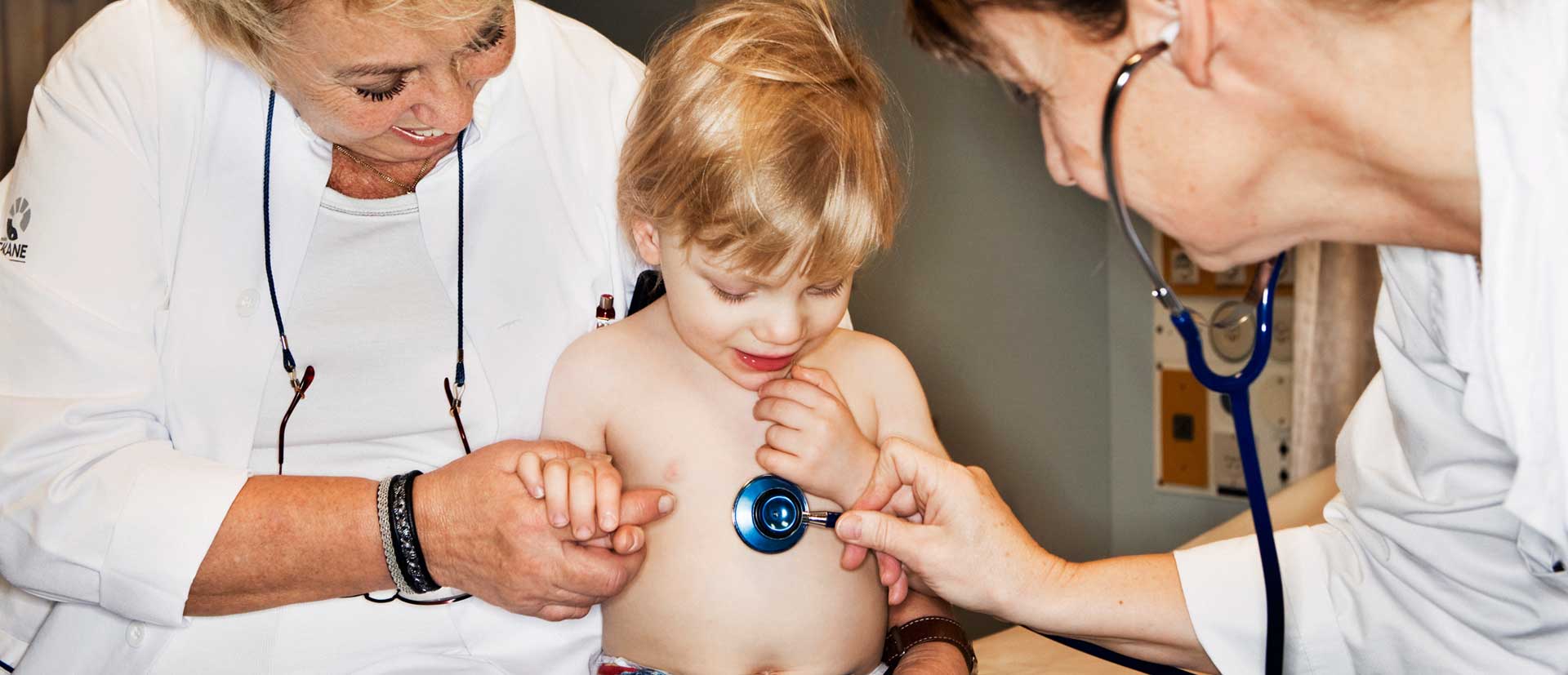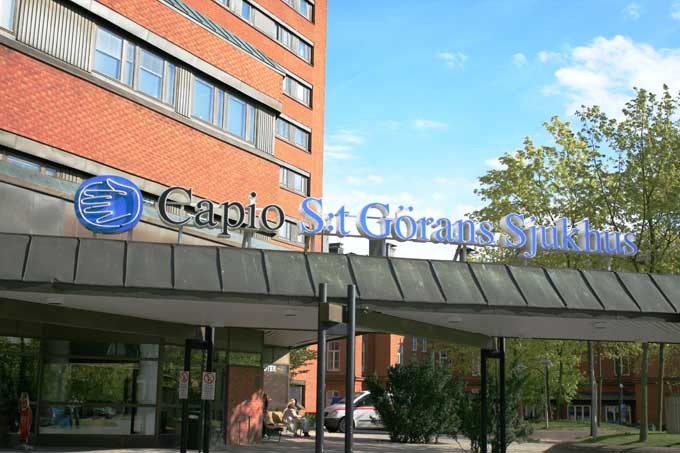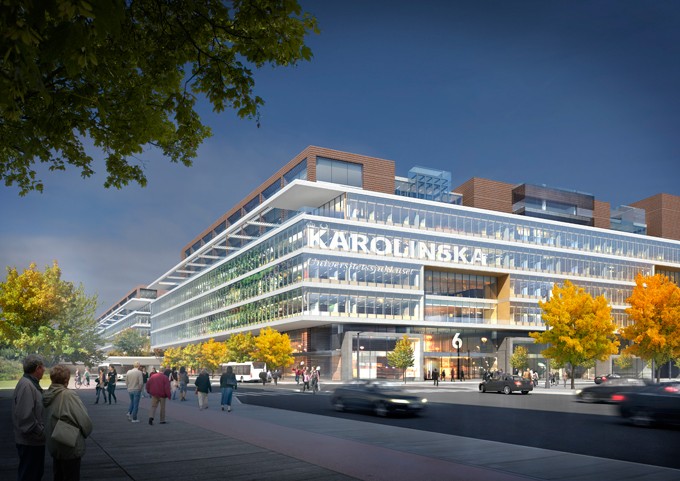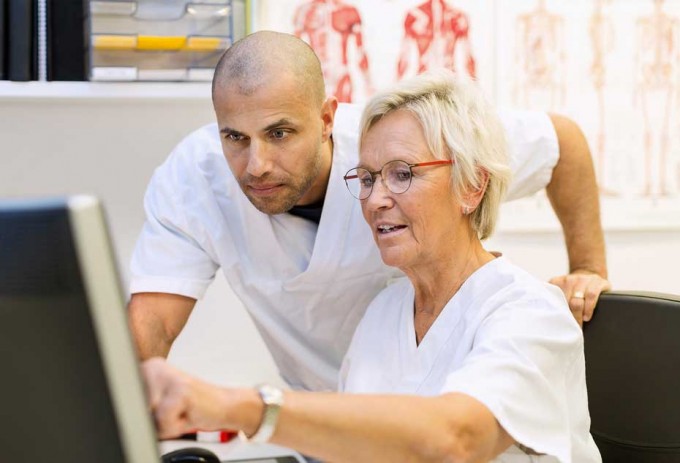
Sweden’s health and medical care system has developed out of economic growth, increasing medical know-how, and deliberate, targeted investments in the health system. The system works well and performs well in international comparisons. But we are now facing an ageing population, an increase in lifestyle-related and chronic diseases, which is placing great demands on the health system. We believe that our policy to offer needs-adjusted, accessible and effective care of high quality, mean that we are well-prepared for the future, but we also realize that a substantial dose of innovative thinking and new ways of organizing healthcare will be required to meet the growing demand.
S:t Görans Hospital in Stockholm, for example, reduced patient processing time by 40% through a major reorganization

Hospital management
Swedish hospitals are constantly developing their management structure and organizational systems and processes in order to unify the various stakeholders and foster collaboration across medical disciplines. In a modern hospital, entire teams of health professionals – from doctors and nurses to hospital administrators – work together to deliver quality care and improve patient outcomes. Collaboration also cuts costs. S:t Görans Hospital in Stockholm, for example, reduced patient processing time by 40% through a major reorganization.
Thematic care
Other hospitals, like the New Karolinska Solna University Hospital, are adopting new patient-oriented teamwork approaches. The new hospital, which admitted its first patient at the end of 2016, is responsible for providing the highly specialized care in Stockholm county. This means advanced medical care that is especially demanding of resources and expertise in regard to medical equipment and the training and experience of health professionals. It is also closely linked to research and education. Care will be provided thematically, which will increase the emphasis on the overall medical needs of the patients. An example is prostate cancer care, where patients need to consult with several specialists, including urologists, oncologists, radiologists, dietitians, social workers and physiotherapists.

Thematically organized wards, single patients rooms which will allow the medical staff to work in teams at the patient’s bedside and the proximity between important departments such as intensive care, imaging & diagnostics and surgery are important features for the new thematic healthcare at Karolinska.
Healthcare networks
The “Future Plan for Stockholm Healthcare” involves a greater degree of collaboration in networks between various healthcare providers regarding the health and medical needs of patients. Collaboration on joint healthcare initiatives will simplify patient contacts with the health system. The GP and primary care centres will have a clearer role as hubs in a network of medical and healthcare services and in supporting patients as they navigate the healthcare network.
e-Health Services
An increase in the number of e-health services will make it easier for citizens to find the correct diagnosis and treatment, and participate in their own healthcare. For example the national web 1177 Vårdguiden (the 1177 Health Care Guide) will enable self-treatment, testing and other services that currently require a physical visit to a clinic. In order to facilitate collaboration across the healthcare network, e-health services are also being expanded for healthcare providers.
The Swedish health system is now shifting from a model in which the patient is the passive recipient of medical intervention to a partnership between patients/family, healthcare providers and health professionals.
People-centered care promotes better resource usage
A patient-centered approach in which health practitioners work more closely together is vital, because clinical knowledge has become so specialized. Swedish healthcare administrators came to this conclusion early on and have been at the forefront of adopting new collaboration models across care disciplines ever since. The Swedish health system is now shifting from a model in which the patient is the passive recipient of medical intervention to one in which an agreement is made with the patient (and their relatives), who is then actively involved in the provision of their own treatment and rehabilitation. The care and treatment are, thereby, provided in the form of a partnership between patients/family, healthcare providers and health professionals.
Increasing flow efficiency
The increase in the number of people with chronic diseases is placing great demands on the health system. Tomorrow’s healthcare will see a shift towards fewer but more expert and intensive care-orientated treatment centers and towards more and more being done on an outpatient basis. The physical premises will, therefore, need to facilitate an efficient flow for the patient who will, preferably, no longer need to be moved from one room to another or from one department to another.
Increased collaboration creates the right innovations
The healthcare of the future will also be characterized by increased collaboration between different county councils and regions. One example already in place is the national testbed for innovative radiotherapy which is a joint investment by all of Sweden’s university hospitals, regional cancer centres and six Medical technology companies. The testbed enables development of the innovations that the health system needs – and is seeking. It also gives companies the chance to try out their innovations in a relevant environment. Development times can be reduced because it quickly becomes clear whether the innovation actually meets the health system’s demands. The collaboration between the university hospitals means that the most effective methods and technologies can be disseminated more rapidly to all of the regions, helping ensure a more consistent equitable health care for all of the country’s cancer patients.
Increased equality means better public health
Efforts to provide greater equitable health care for all are continuing in order to reduce the health gaps in society. The Commission’s primary focus will be on health differences between different socioeconomic groups, between the sexes, between people with disabilities, LBTQ people, people with a foreign background, members of national minorities, and the rest of the population. Health differences between those who are employed and those who are not part of the labor market will also be taken into account.
New technology and new solutions
Maintaining the health of the industry in the form of new pharmaceuticals, new medical technology and other solutions, is also important if we are to meet tomorrow’s challenges. New innovations in healthcare result in more efficient care processes and treatment methods, and in highly developed diagnostic and prevention systems. A product or solution that helps the patient recover more quickly and ensures a shorter hospital stay not only reduces the patient’s suffering, it also saves the healthcare personnel’s time and offers a better solution for society as a whole.
We have a lot to do, but looking back, it is also clear what an incredible difference can be achieved over the course of a century – if we work together. Increased national and international collaboration between the private and public sectors and academia will ensure that, together, we are equipped to continue improving our health systems and face future health challenges.
Photo credit: Capio, Nya Karolinska Solna, illustration: White Tengbom Team




